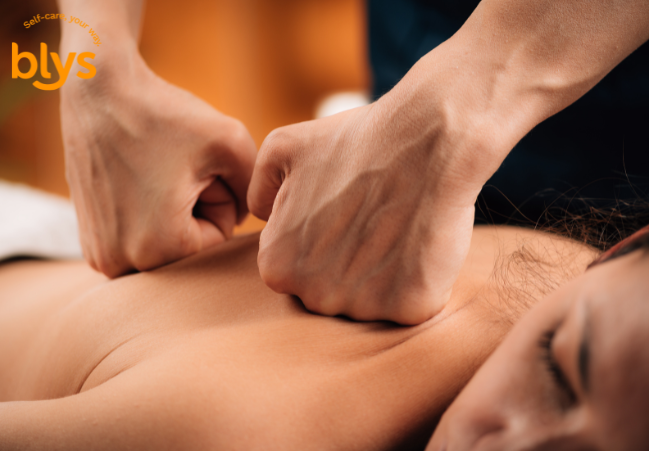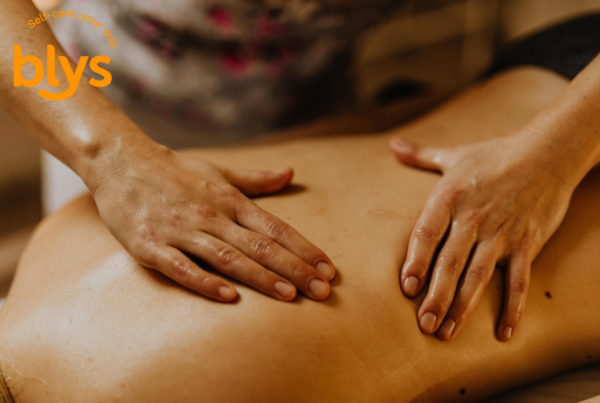
Recovery isn’t just for elite athletes anymore. These days, everyone from gym regulars to busy professionals is looking for smarter ways to deal with tight muscles, fatigue, and post-workout soreness.
With the growing popularity of tools like massage guns, foam rollers, infrared saunas, and even cryotherapy chambers, it’s clear that recovery has become a key part of everyday wellness routines.
But one method has stood the test of time and continues to deliver real results deep tissue massage. Unlike lighter techniques that focus on relaxation, deep tissue massage works by applying slow, sustained pressure that targets deeper layers of muscle and fascia.
It’s become a favorite not just for athletes, but also for office workers with poor posture, parents managing physical stress, and anyone living an active lifestyle.
What makes it so effective? In this article, we’ll unpack the science behind deep tissue massage, explain how it works for muscle recovery, and why it could be the missing piece in your wellness routine.
What Is Deep Tissue Massage?
Deep tissue massage is a targeted therapy that uses slow, deliberate strokes and deep finger pressure to work on the inner layers of your muscles and fascia the connective tissue surrounding muscles, bones, and joints.
This technique is designed to relieve chronic muscle tension, release trigger points, and promote healing by improving circulation and breaking up scar tissue.
- Applies consistent, focused pressure to access deeper muscle structures
- Helps restore proper muscle function and reduce inflammation at the source
How It Differs from Swedish or Relaxation Massage
Unlike Swedish massage, which uses light to moderate pressure and long flowing strokes to promote overall relaxation, deep tissue massage goes much further beneath the surface.
It’s specifically aimed at addressing tight knots, restricted movement, and lingering discomfort that can’t be eased with lighter touch techniques.
- Swedish massage is ideal for stress relief and boosting general well-being.
- Deep tissue massage is better suited for treating pain, limited mobility, and post-exercise soreness
While a Swedish session may leave you feeling calm and floaty, a deep tissue massage might involve moments of intensity but the results are often long-lasting and functional.
Who Benefits from Deep Tissue Massage?
Deep tissue massage is a popular choice for people who lead active or physically demanding lifestyles, as well as those managing the effects of chronic posture issues, past injuries, or ongoing muscular discomfort.
You don’t need to be an athlete to benefit anyone dealing with repetitive strain, tension headaches, or neck and back tightness may find relief.
- Active individuals: Runners, cyclists, weightlifters, and weekend gym-goers seeking recovery support
- Professionals and parents: Desk workers, tradies, and caregivers with recurring muscle stiffness or tension
Whether you’re working towards better performance, easing tight muscles, or simply wanting to move more freely, deep tissue massage provides a focused approach to physical well-being.
It’s one of the most effective ways to reset your body and regain comfort especially when delivered by a qualified therapist who understands your specific needs.
Best Timing and Frequency for Massage
Knowing when to get a massage is just as important as choosing the right type. Whether you’re aiming for recovery, injury prevention, or overall maintenance, timing your deep tissue massage properly can make a big difference in how effective it feels and how long the benefits last.
Here’s a quick guide to the most effective timing and frequency:
| When to Get a Massage | Why It Helps |
| Within 2–48 hours post-exercise | Eases Delayed Onset Muscle Soreness (DOMS), reduces swelling, and speeds up recovery. |
| Regular sessions (weekly or fortnightly) | Prevents stiffness, supports muscle balance, and lowers the risk of injury. |
| Before a physically demanding event | Prepares muscles for activity by improving circulation and mobility. |
| As part of a recovery routine | Helps maintain flexibility and function, especially if you’re training frequently. |
| Session length: 60–90 minutes | Allows enough time to work on key problem areas and promote full-body relief. |
For active individuals, a weekly or fortnightly massage can support both performance and recovery. If you’re new to massage or dealing with specific muscle tension, starting with shorter intervals may help you feel results more quickly.
If you’re dealing with long-term discomfort, deep tissue massage may also help manage chronic conditions. Learn how it supports chronic pain relief in our dedicated guide.
How Does Deep Tissue Massage Work?
Deep tissue massage targets the deeper layers of muscle and fascia using firm, sustained pressure. It supports recovery in several ways. One major benefit is improved circulation and lymphatic flow, which helps the body clear out metabolic waste like lactic acid while delivering oxygen and nutrients to inflamed tissue.
Studies confirm that massage boosts lymph flow and shifts the body into a state conducive to healing. This treatment also works on breaking down adhesions and minor scar tissue, softening tight muscle fibers that restrict movement. According to researchers, mechanical pressure from massage can increase muscle compliance, improving flexibility and range of motion.
Massage also alters pain perception by activating pressure receptors a process consistent with gate control theory effectively interfering with pain signal transmission. Clinical trials show deep massage reduces experimental muscle pain and hyperalgesia.
Finally, deep pressure massage promotes a parasympathetic (rest-and-digest) response, lowering stress hormones, reducing heart rate, and enabling physical recovery .
Need targeted pressure for sore spots or tight muscles? Book a qualified Blys therapist to your door US‑wide.
What the Research Says About Recovery
Recovery isn’t just about waiting for soreness to pass it’s about supporting your body with the right tools at the right time. For people who exercise regularly or engage in physically demanding work, what you do after training can significantly impact how quickly you bounce back.
That’s where deep tissue massage comes in. It’s not just a feel-good add-on-research shows it can play a measurable role in speeding up muscle repair and easing post-exercise pain.
Multiple studies, including those published in the Journal of Athletic Training, have investigated how massage affects recovery markers like soreness, inflammation, and muscle function.
- Massage two hours post-exercise reduces DOMS and swelling: A study in the Journal of Athletic Training found that participants who received a 30-minute massage two hours after eccentric exercise experienced significantly less soreness and swelling than those who didn’t.
- Lower levels of creatine kinase, a marker of muscle damage: The same study showed that those who received massage had reduced levels of creatine kinase in their blood, suggesting a milder response to muscle damage and faster recovery.
- Massage helps restore muscle function faster: While full strength recovery takes time, massage helped improve comfort and mobility sooner, allowing participants to return to movement with less restriction.
These findings reinforce what many people already feel after a session—massage plays a real role in recovery. For those training regularly or dealing with ongoing muscle fatigue, adding massage to your post-workout routine can make each comeback smoother.
What Happens to Muscles After Intense Activity?
When you engage in physical activity that pushes your muscles beyond their usual workload, your body enters a natural recovery cycle. This cycle involves minor muscle damage, inflammation, and tissue repair all of which are necessary for building strength.
But without proper recovery support, this process can also lead to prolonged soreness, stiffness, or even injury. Let’s take a closer look at what really happens inside your muscles after a tough workout.
-
Exercise causes tiny microtears in muscle fibers.
During intense or unfamiliar exercise, your muscles undergo microtrauma tiny disruptions in the muscle fiber structure. This damage is a signal for the body to repair and adapt, leading to increased strength and endurance.
While the exact role of microtears in muscle growth is still debated, experts acknowledge they are a real phenomenon that occurs during strenuous workouts.
-
The body responds with inflammation, causing Delayed Onset Muscle Soreness (DOMS).
Following the microtrauma, your immune system initiates an inflammatory response in the affected muscle tissue. This leads to DOMS, a soreness and stiffness that typically begins 12 to 24 hours after exercise, peaks between 24 and 72 hours, and gradually subsides over several days.
-
Effective circulation helps flush out metabolic waste and deliver nutrients.
Good blood flow is essential for clearing metabolic by-products like carbon dioxide and lactic acid and for delivering oxygen, amino acids, and other nutrients needed for repair.
When circulation is impaired, waste lingers, and soreness lingers highlighting why therapies that boost circulation are so beneficial.
Understanding these underlying processes microtrauma, inflammation, and circulation—clarifies the importance of recovery strategies.
Deep tissue massage, in particular, helps by stimulating blood flow and lymphatic drainage, which in turn accelerates the removal of waste and supports more efficient healing after exercise.
Deep tissue massage isn’t just for recovery it can support everything from stress relief to improved posture. Explore the full benefits in this guide.
Deep Tissue Massage and Performance Gains
When we think of deep tissue massage, we often associate it with post-workout recovery or pain relief but its benefits go much further. For anyone looking to maintain an active lifestyle, improve physical function, or prevent injury.
Deep tissue massage can play a powerful role in overall performance. Unlike quick fixes or passive recovery tools, it works directly on muscle mechanics and neuromuscular patterns to support your body where it matters most.
Whether you’re training for a marathon, lifting at the gym, or simply managing physical stress from work or daily life, regular massage therapy can help your body move and perform at its best. Let’s explore how.
Improved range of motion and flexibility
When muscles and fascia become tight or overused, they can restrict your range of motion and make everyday movement feel stiff or limited. Deep tissue massage helps by loosening these restrictions and restoring normal tissue length.
As pressure is applied to deep layers of muscle, it helps release stored tension and softens connective tissue. This process allows joints to move more freely, making it easier to stretch, reach, lift, or squat without discomfort.
Enhanced muscle function and injury prevention
Muscles that are tight, fatigued, or out of balance are more likely to underperform or compensate during movement, both of which increase the risk of injury.
Deep tissue massage improves circulation and supports optimal muscle tone, which enhances performance during exercise and daily tasks.
When your muscles function properly, your movements become more efficient, reducing unnecessary strain on surrounding joints and tissues.
Helps reset neuromuscular patterns
Over time, repetitive motion, poor posture, or previous injuries can alter the way your muscles fire. You may start to favor one side or develop imbalances without realizing it. Deep tissue massage promotes better communication between the muscles and the nervous system, encouraging more balanced movement.
This neuromuscular reset helps retrain your body to move in a safer, more coordinated way, which is essential for performance and long-term health. The combined impact of these benefits means that deep tissue massage isn’t just a recovery tool it’s a performance enhancer.
When used consistently, it can help you feel more mobile, stable, and strong across all areas of your physical activity.
What to Expect in a Blys Deep Tissue Session
When you book a deep tissue massage with Blys, you’re choosing convenience without compromising on quality. Your therapist will arrive at your home with all the essentials, including a professional massage table, clean towels or sheets, and oils suited for deep tissue work. All you need is a quiet space with enough room to relax comfortably.
Before the session begins, your therapist will check in to understand your goals and any problem areas you’d like to focus on. Communication is encouraged throughout the massage, so you can let your therapist know if the pressure feels too light or too strong.
- Therapists listen to your needs and adapt their techniques accordingly.
- You stay in control of pressure, comfort, and focus areas throughout.
Every massage is tailored to your personal recovery goals. Whether you’re sore from training, dealing with muscle tightness from work, or simply needing time to unwind, your session will be structured around what your body needs most that day.
- Custom plans help maximize benefits for both body and mind.
- Great for targeting recovery, mobility, and overall well-being.
Blys operates across the US, including major cities and regional centers. All therapists are fully qualified, background-checked, and insured for your peace of mind. You get high-level care with the ease of booking on your schedule.
Ready to feel the difference? Book your deep tissue massage with Blys and enjoy expert care at home.
The Smarter Way to Recover With Blys
Deep tissue massage isn’t just about feeling good it’s about function, recovery, and long-term results. From easing delayed onset muscle soreness to restoring flexibility and circulation, the science shows it can support your body when it needs it most.
Blys takes that recovery one step further. With expert therapists delivering professional treatments straight to your door, you don’t need to stress about traffic, clinic hours, or squeezing it into a packed schedule. It’s care made convenient.
Whether you’re a regular gym-goer, a weekend hiker, or someone who sits at a desk all week, making deep tissue massage part of your routine could be a game-changer for your well-being.
Ready to recover better? Book your in-home deep tissue massage with Blys and feel the results from the very first session.





